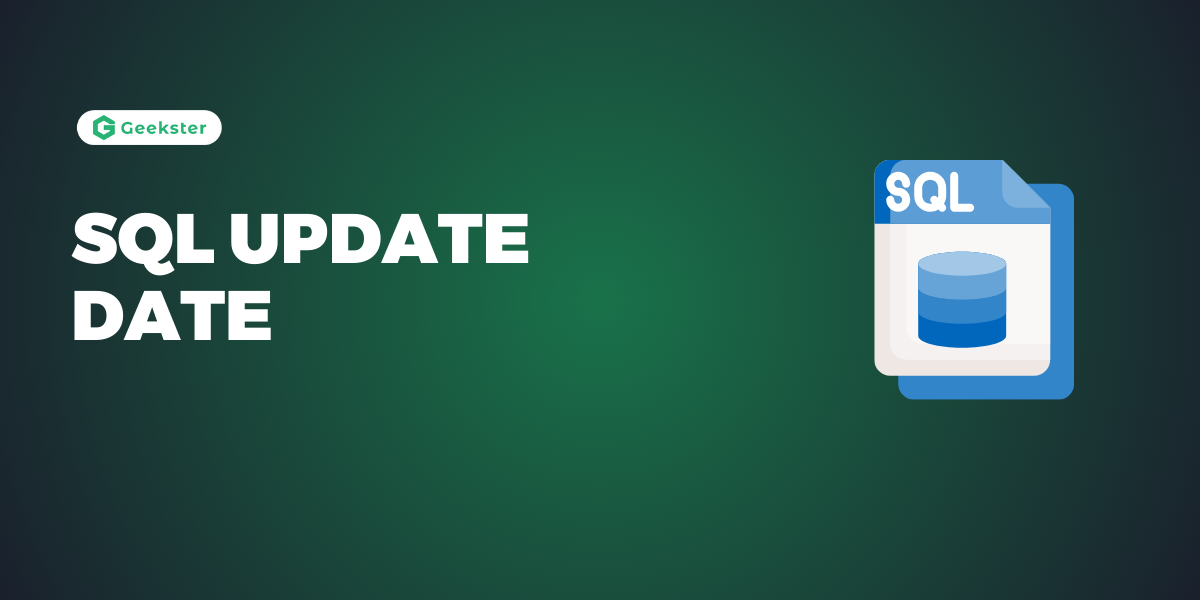In the realm of relational databases, structured query language (SQL) serves as the lingua franca for managing and manipulating data. Among its arsenal of commands, the UPDATE statement stands out as a powerful tool for modifying existing records within a table. When it comes to dates, SQL provides specific functionality tailored for updating date values, crucial for scenarios ranging from simple date adjustments to more complex temporal transformations.
The UPDATE statement in SQL allows users to modify one or more records in a table, altering their attributes according to specified criteria. When dealing with date attributes, such as columns storing dates of transactions, events, or any temporal data, SQL provides syntax and functions to facilitate accurate updates while maintaining data integrity.
Whether it’s correcting erroneous dates, adjusting timestamps, or updating temporal references, understanding the nuances of updating dates in SQL is essential for effective data management. This guide delves into the intricacies of the SQL UPDATE statement concerning dates, exploring syntax, usage scenarios, and best practices for seamless date manipulation within relational databases.
The SQL UPDATE statement with the DATE data type is used to modify existing records within a table, specifically focusing on date attributes. It allows users to adjust the values of date columns according to specified conditions, thereby updating the temporal aspects of the data stored in the database.
Syntax
UPDATE table_name
SET column_name = new_date_value
WHERE condition;
Examples of SQL UPDATE DATE
Example 1: Updating a Single Date Record
-- Table: sales
| sale_id | sale_date | amount |
|---------|-------------|--------|
| 1001 | 2023-12-15 | 500 |
| 1002 | 2024-01-20 | 700 |
| 1003 | 2024-02-10 | 300 |
-- SQL UPDATE statement
UPDATE sales
SET sale_date = '2024-03-25'
WHERE sale_id = 1002;
-- Expected Output (Updated Table: sales)
| sale_id | sale_date | amount |
|---------|-------------|--------|
| 1001 | 2023-12-15 | 500 |
| 1002 | 2024-03-25 | 700 |
| 1003 | 2024-02-10 | 300 |
Example 2: Updating Multiple Date Records
-- Table: events
| event_id | event_date | location |
|----------|-------------|------------|
| 2001 | 2024-05-10 | New York |
| 2002 | 2024-06-15 | London |
| 2003 | 2024-07-20 | Paris |
-- SQL UPDATE statement
UPDATE events
SET event_date = '2024-08-30'
WHERE location = 'London';
-- Expected Output (Updated Table: events)
| event_id | event_date | location |
|----------|-------------|------------|
| 2001 | 2024-05-10 | New York |
| 2002 | 2024-08-30 | London |
| 2003 | 2024-07-20 | Paris |
Example 3: Updating Date Using Date Functions
-- Table: tasks
| task_id | task_name | due_date |
|---------|--------------|------------|
| 3001 | Project A | 2024-05-20 |
| 3002 | Project B | 2024-06-30 |
| 3003 | Project C | 2024-07-15 |
-- SQL UPDATE statement
UPDATE tasks
SET due_date = DATE_ADD(due_date, INTERVAL 1 MONTH);
-- Expected Output (Updated Table: tasks)
| task_id | task_name | due_date |
|---------|--------------|------------|
| 3001 | Project A | 2024-06-20 |
| 3002 | Project B | 2024-07-30 |
| 3003 | Project C | 2024-08-15 |
Example 4: Conditional Update Based on Date Range
-- Table: appointments
| appt_id | client_name | appt_date |
|---------|--------------|------------|
| 4001 | John Smith | 2024-05-05 |
| 4002 | Alice Jones | 2024-06-10 |
| 4003 | Emily Brown | 2024-07-20 |
-- SQL UPDATE statement
UPDATE appointments
SET appt_date = '2024-07-25'
WHERE appt_date BETWEEN '2024-06-01' AND '2024-06-30';
-- Expected Output (Updated Table: appointments)
| appt_id | client_name | appt_date |
|---------|--------------|------------|
| 4001 | John Smith | 2024-05-05 |
| 4002 | Alice Jones | 2024-07-25 |
| 4003 | Emily Brown | 2024-07-20 |
Conclusion
In conclusion, the SQL UPDATE statement offers a powerful means of modifying date values within tables, allowing for precise adjustments and updates to temporal data. Through the flexibility of SQL syntax and the availability of date functions and calculations, users can manipulate date attributes with ease, ensuring data accuracy and consistency.
Updating dates in SQL is essential for maintaining the integrity and relevance of databases, whether correcting errors, reflecting changes, or implementing temporal transformations. By leveraging conditional logic, date functions, and best practices, SQL UPDATE statements empower users to efficiently manage date-related information across various applications and industries.
Understanding the nuances of SQL UPDATE DATE operations is crucial for database administrators, developers, and analysts tasked with data maintenance and manipulation. With proper knowledge and proficiency in SQL, users can navigate complex temporal scenarios and execute precise updates, contributing to the reliability and effectiveness of database systems.
In summary, SQL UPDATE DATE operations play a vital role in database management, facilitating the seamless manipulation and maintenance of date attributes within relational databases. By mastering SQL’s capabilities for updating dates, users can effectively manage temporal data and ensure the accuracy and relevance of their database records.
Frequently Asked Questions
Yes, you can update multiple date records in a single SQL UPDATE statement by specifying appropriate conditions using the WHERE clause. For example: UPDATE table_name SET date_column = 'new_date' WHERE condition;
Q2: How can I increment or decrement dates during an update operation?
You can use date functions like DATE_ADD() and DATE_SUB() to increment or decrement dates. For example: UPDATE table_name SET date_column = DATE_ADD(date_column, INTERVAL 1 DAY);
Q3: What if I want to update dates based on specific conditions or date ranges?
You can use conditional statements and date comparisons in the WHERE clause to update dates based on specific conditions or date ranges. For example: UPDATE table_name SET date_column = 'new_date' WHERE date_column BETWEEN 'start_date' AND 'end_date';
Q4: Can I update dates by performing calculations or transformations?
Yes, you can perform calculations or transformations on dates using arithmetic operators and date functions within the UPDATE statement. For example: UPDATE table_name SET date_column = DATE_ADD(date_column, INTERVAL 1 MONTH);

